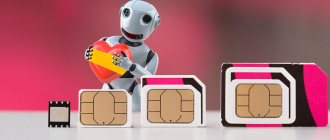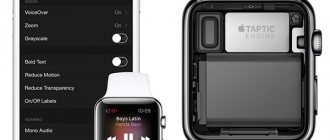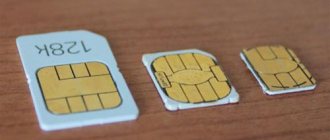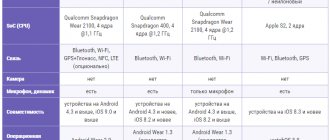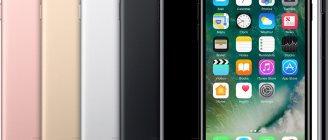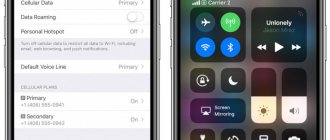Less than a year has passed, but MTS still launched eSIM - the last of the country's large operators. After MegaFon, Tele2, Beeline and Tinkoff Mobile.
Well, better late than never.
For the sake of this article, I tried to connect eSIM from the “reds” among the first. Everything worked out, although not the first time. Now your iPhone has access to another Russian operator, and with it full coverage of all major networks in Russia, available with a couple of taps in Settings.
Let's go: here is the procedure for obtaining an eSIM from MTS via the Internet or in the salon.
eSIM from the operator Tinkoff Mobile
The second major operator in Russia that began to connect subscribers to eSIM was the virtual Tinkoff Mobile. For the first time in the Russian Federation, it was possible to connect a number without visiting the office. True, this function is available only to existing Tinkoff Mobile subscribers or Tinkoff Bank clients. Who have already passed the identification procedure at the bank. According to the general director of the Tinkoff Mobile virtual network, 11 million users can connect to eSIM.
How to receive and connect eSim to Tinkoff Mobile
To do this, you need to download the operator's mobile application. Access to eSIM must be configured manually by scanning the sent QR code on another device. Next, use the auto-connection function.
Connection options: step-by-step instructions
How to activate and use an electronic card (built-in eSIM):
- the user buys a smartphone with eSIM support;
- fills out an online application with a virtual operator on the website or comes to the company’s office;
- after reviewing the application, the user receives a QR code;
- in the smartphone settings, adds the phone number and mobile tariff using the received code, thereby activating the eSIM.
Legality of technology
This type of mobile communication is absolutely legal. Approval for the introduction of virtual cards was issued by the FSB, allowing the use of the State Services service to identify clients.
The government of the Russian Federation has not yet determined its attitude towards the new standard for the use of eSIM by mobile operators. This is due to the fact that the technology allows you to use one number on different devices at the same time.
eSIM from Beeline operator (VimpelCom)
VimpelCom is testing self-registration of subscribers through a mobile application. The process involves sending a passport photo and a face photo in real time. And the contract can be signed on the smartphone screen. At the end of July, Beeline launched connecting subscribers to eSIM in Moscow and St. Petersburg, and then in the regions. Read more about how to connect eSIM from Beeline here.
Connecting the service in other countries
Foreign telecom operators also support smartphone manufacturers in the development of eSIM technology, which allows one to abandon the traditional physical SIM card.
For example, Thai companies are already connecting new subscribers remotely, but British companies use eSIM, but invite them to connect to communication shops.
List of foreign operators that have launched eSIM connections: AT&T, T-Mobile, Verizon, Truphone, EE, O2 and Vodafone.
They do not support eSIM in China; the country has decided that such changes will only harm them.
In the East, India and Asia, the government has established special rules for the use of eSIM for subscribers.
The pioneer in the field of new systems was the well-known company Apple. It was the first to produce smartphones that support the eSIM standard. Apple gadgets, starting with the iPhone XR, have both a regular SIM slot and an electronic SIM card.
Which phones support eSim?
There are still few smartphones that support eSim, and all of them belong to the premium segment:
- Apple iPhone – XR, XS, XS Max and 11 models.
- Google Pixel 3 and 4 generations.
- LG G7 ThinQ.
Tablets also support eSim:
- iPad Pro 11 inches.
- iPad Pro 3 version 12.9 inches.
- iPad Air 3.
- iPad Mini 5.
- Microsoft Surface 5th and 6th generations.
There are several smartwatch models that support an electronic SIM card. We are talking about Apple Watch 3 and 4, Samsung Galaxy Gear S3 and Huawei Watch 2.
Prospects for eSIM in Russia
The development of technology in Russia occurred with certain difficulties. The FSB opposed the introduction of eSIM, since this technology does not meet the encryption standards adopted in Russia. And this discrepancy, according to the FSB, makes it possible for foreign companies and their intelligence services to steal subscriber data.
Large operators in Russia shared the opinion of the FSB, since they believe that the introduced technology will devalue regular SIM cards and will allow new operators to enter the market, which will increase competition. At the moment in Russia, the legal status of using eSIM has not yet been fully determined, so usually in a communication store an eSIM is issued as a classic SIM card, which is then transferred to a virtual format. This procedure is necessary in order to comply with local laws on verifying the identity of subscribers.
Of course, this procedure makes it a little more difficult to obtain an eSIM, because the technology initially does not involve visiting the operator’s showroom. The Ministry of Telecom and Mass Communications plans to introduce a package of amendments that will make it possible to confirm identity remotely, possibly using biometric data. Today, some operators already offer a workaround in the form of taking a photograph with an identity document, or calling a courier to process the documents.
What is eSIM?
A regular SIM card is a modular chip. You insert it into your phone and use the network. eSIM is an embedded programmable chip. It is immediately installed on your phone, and all you have to do is select the operator and the desired tariff.
Compared to traditional SIM cards, built-in ones have one important advantage for the user: they are not tied to one operator. You can connect, for example, to MTS, and after a month switch to Beeline without having to contact a communication shop. eSIM is more convenient than regular SIM cards.
This makes work easier for manufacturers as well. Now engineers need to make phones so that the user has access to the SIM card tray. With eSIM there is no need to think about this, since it is already built into the phone. eSIM is more practical than regular SIM cards.
Connected eSIM from MTS online. It didn't work the first time
1. First of all, I tried a simple option for activating eSIM in MTS - through the eSIM order page on the operator’s website.
2. I chose a number and tariff, logged in using my existing MTS account, and proceeded to the stage of confirming personal data. You can do this online by simply linking your account with State Services.
The account level must be Confirmed, that is, with all the information about the passport and registration.
I agreed to online confirmation, linked both accounts, and...
I had problems connecting through the browser on my iPhone.
What does this error mean? I went to State Services and checked the status of my account. Confirmed, everything is as it should be. All data is available and correct.
I went into my MTS personal account. Here, too, the binding is in place, the passport data is “picked up.” Everywhere there is the inscription State Services, confirming the successful connection of accounts.
The profile has been confirmed by State Services. Confirmed by MTS. And when ordering eSIM, it is not confirmed. L – logic
The error was and remains the same. Is it really so difficult to properly describe the essence of the problem? All the data there was verified (along with the account), and here they got it right, but... alas.
In the end, I decided to repeat the process from the browser on my computer . Miracle, confirmation was successful!
3. Next, you sign documents directly in your browser using a simple electronic signature. In fact, you only need to indicate your email and click “Sign” .
BUT! In the best traditions of the “fine print,” MTS wants to convince you to agree to controversial terms. For example, allow NOT to send you notifications about the conditions of tariff plan changes. And allow your personal data to be shared with others for advertising purposes.
There is a temptation to disagree with all points. But definitely refuse to prohibit receiving notifications about changes in tariff conditions.
You must check the box next to DISAGREE to refuse certain conditions. This does not affect receiving an eSIM. I advise you to at least refuse what I clicked on the picture above.
4. After signing the contract, wait 3-5 minutes without closing the browser window . It will update itself and redirect you to the payment page.
5. Having paid, wait a few more minutes (do not close the browser window!) - now until you receive the QR code .
6. The QR code activates the tariff automatically through the tools built into iOS. Store it in a safe place for future use.
Now take out your iPhone, go to Settings -> Cellular -> Add cellular plan and point the camera at the QR code.
7. iOS will offer to give names for the existing physical and virtual SIM cards, and select their priority for calls and the Internet. You'll figure it out for yourself, I'm sure.
That's all. You have an eSIM from MTS in your iPhone, you can use it. After 10-30 minutes, the eSIM will be fully activated and welcome messages will arrive. To manage your tariff, I advise you to download the operator’s application.
Advantages and disadvantages of virtual SIM cards
Advantages of implementing eSIM:
- use of 5 numbers on one chip (no need to buy a device with several slots for regular SIM cards);
- use of one number on all mobile devices;
- there are no problems with loss, since you can activate the profile on another smartphone without contacting the operator;
- If you lose your phone, it is possible to completely block the device so that no one can use it;
- takes up less space in equipment;
- quickly changing operators is a plus for users;
- it is possible to activate the SIM card remotely;
- one electronic SIM for the whole world. There is no need to buy a new SIM card when traveling, you just need to change your cellular tariff to a more favorable one from a local operator;
- for gadget manufacturers, savings on the production of physical SIM cards;
- cannot be broken like a regular SIM card or inserted incorrectly into the slot;
- no need to disassemble your mobile phone to insert another SIM card.
Disadvantages of implementing eSIM technology:
- several numbers do not work at the same time;
- financially unprofitable for companies, since they need to change and invent sales channels;
- a huge disadvantage for existing companies, since they may lose positions due to new emerging virtual operators;
- there is a high probability of fraudulent activity; if they take possession of the chip data, then all the information on the smartphone, including bank card data, will be at risk;
- quick change of operator is a minus for cellular companies.

